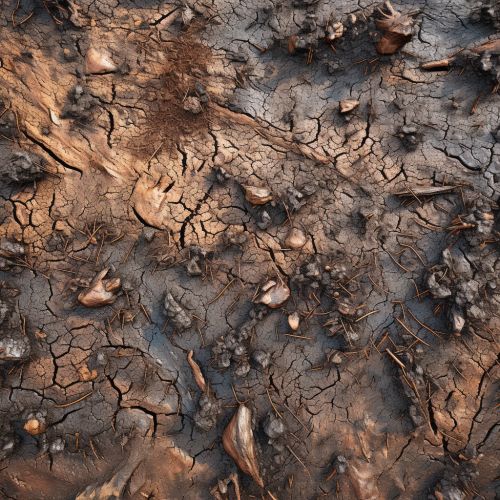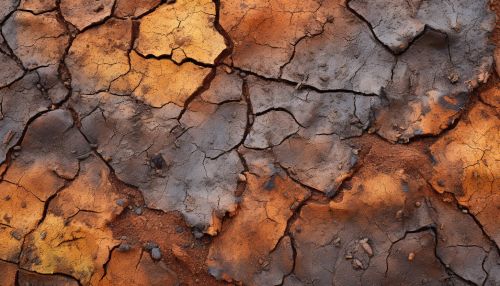Effects of Acid Rain on Soil
Introduction
Acid rain is a term referring to a mixture of wet and dry deposition (deposited material) from the atmosphere containing higher than normal amounts of nitric and sulfuric acids. The precursors, or chemical forerunners, of acid rain formation result from both natural sources, such as volcanoes and decaying vegetation, and man-made sources, primarily emissions of sulfur dioxide (SO2) and nitrogen oxides (NOx) resulting from fossil fuel combustion. Read more about Acid Rain.
Effects of Acid Rain on Soil
Acid rain has many ecological effects, but none is greater than its impact on soils. Acid rain dramatically alters the pH level of soil, making it unsuitable for many types of plant life. This is particularly harmful in areas where the soil is thin and lacks the ability to neutralize the acid in the rain water.


Soil Chemistry
The chemistry of soils is greatly influenced by acid rain. When acid rain falls, it can dramatically alter the pH level of the soil. This can make the soil either too acidic or too alkaline for plants to survive. The acid can also leach away essential nutrients and minerals in the soil, such as magnesium and calcium, which plants need to grow. This process is known as soil leaching.
Soil Biology
Acid rain not only affects the chemical composition of soil, but also its biological composition. Many organisms, such as earthworms and beneficial bacteria, cannot survive in highly acidic conditions and will die off. This can lead to a decrease in soil fertility, as these organisms play a crucial role in breaking down organic matter and making nutrients available to plants.
Soil Buffering Capacity
The buffering capacity of a soil is its ability to resist changes in pH. Soils with a high buffering capacity can neutralize acids and maintain a stable pH level. This is often due to the presence of certain types of minerals, such as carbonates, which can neutralize acids. However, if the acid input is too high, the buffering capacity of the soil can be overwhelmed, leading to a drop in pH.
Impact on Agriculture
The impact of acid rain on agricultural lands is significant. Acid rain can leach away essential nutrients in the soil needed by crops. This can lead to reduced crop yields and in severe cases, can make the soil unsuitable for farming. In addition, acid rain can cause a buildup of toxic substances in the soil, which can be absorbed by crops and potentially enter the food chain.
Impact on Forests
Forests are particularly vulnerable to the effects of acid rain. The acid can leach away nutrients in the soil that trees need to grow. In addition, acid rain can cause the release of toxic substances such as aluminium into the soil, which can be harmful to trees. The combination of nutrient loss and exposure to toxic substances can weaken trees and make them more susceptible to other stresses, such as disease, drought, and cold temperatures.
Prevention and Mitigation
There are several strategies to prevent and mitigate the effects of acid rain on soils. These include reducing the emissions of sulfur dioxide and nitrogen oxides, which are the primary causes of acid rain; using lime to neutralize the acid in the soil, a process known as liming; and promoting the growth of plants and trees that can tolerate acidic conditions.
